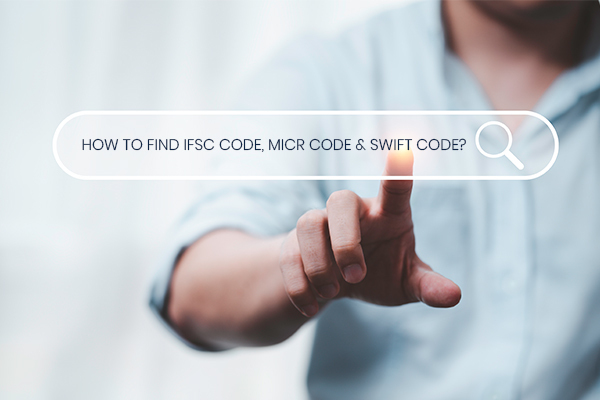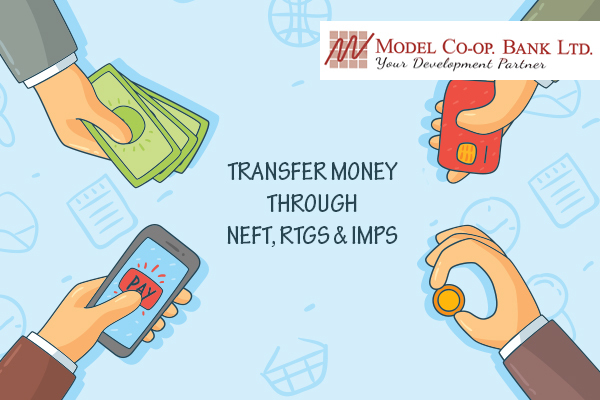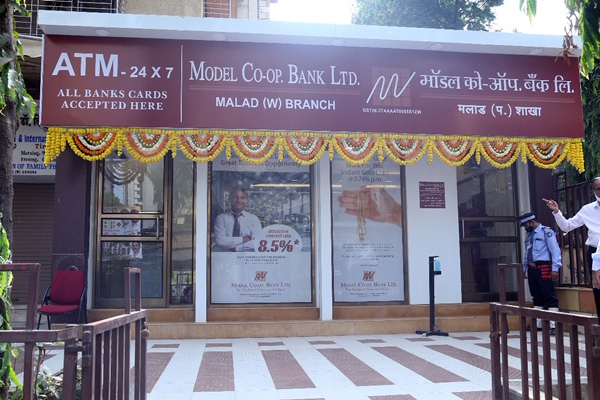 Model Co Operative Bank IFSC Code and MICR Code
Model Co Operative Bank IFSC Code and MICR Code
Find Model Co Operative Bank IFSC Code, MICR Code and branch details for NEFT, RTGS & IMPS transactions.
 Model Co Operative Bank IFSC Code and MICR Code
Model Co Operative Bank IFSC Code and MICR CodeFind Model Co Operative Bank IFSC Code, MICR Code and branch details for NEFT, RTGS & IMPS transactions.
 Model Co Operative Bank IFSC Code Finder - Select Your State
Model Co Operative Bank IFSC Code Finder - Select Your StateThe Indian banking system has a unique identification code for every bank branch in the country. The codes are used to complete online transactions by correctly identifying the branch where the account is located. For example, the Model Co-Operative Bank IFSC Code is used to identify its respective branch.
The Indian banking system has a unique identification code for every bank branch in the country. The codes are used to complete online transactions by correctly identifying the branch where the account is located. For example, the Model Co-Operative Bank IFSC Code is used to identify its respective branch.
While the IFSC code is used for online money transfers, the MICR code is used to speed up electronic cheque clearing by the banks. Every banking code has a purpose and streamlines the banking processes. In this article, we will read more about the IFSC and MICR codes of Model Co-Op Bank and learn ways to find the codes online and offline. We'll also read about different online money transfer methods such as NEFT, RTGS, and IMPS.

IFSC is short for the Indian Financial System Code, an 11-character unique code allotted by the Reserve Bank of India (RBI) to each branch of every bank in India. The IFSC code is a combination of alphabets and numbers.
Let's take the example of Model Co-Operative Bank Fort Branch, Mumbai IFSC Code is MDBK0000013. The code contains 11 characters and is divided into three sections where the first four characters denote bank code, and the fifth character is always a zero. The remaining six characters denote the branch code.
The Model Co-Operative Bank IFSC Code is MDBK0000013. Here,
The IFSC code is a must if you want to send money online to another person's bank account. The code is used to identify the branch where the beneficiary's account is located. The IFSC code helps the banking system easily find accounts and facilitate wire transfers through NEFT, RTGS, IMPS, etc.
Using the wrong IFSC code during digital money transfer can lead to different scenarios. If the account number is correct, the amount might still be credited to the beneficiary's account. If both the IFSC code and account number are wrong, the transaction might fail, or the money might be credited to another person's account.
It's important to know the correct IFSC code and account number of the beneficiary before initiating an online funds transfer.
The MICR code is also allotted by RBI. However, it is printed on the cheques using Magnetic Ink Character Recognition technology and is used during the Electronic Clearing System (ECS). Cheques are cleared either manually or electronically. The manual process takes time and doesn't require any code.
ECS is an electronic process where the MICR code authenticates that the cheque is genuine and belongs to the said bank branch. It hastens the process and allows money to be credited faster to the beneficiary's account.
The MICR code is of 9 digits and divided into three sections. Each section contains three digits. The MICR code of Model Co-Op Bank is 400807005. Here,
Unlike the Model Co-Operative Bank IFSC Code, the MICR code is not used for NEFT, RTGS, or IMPS. It is relevant only when dealing with cheque transactions. You can find the MICR code printed at the bottom of each cheque and on the front page of the cheque book.

You can find the Model Co-Operative Bank IFSC Code in many ways. It is available online and offline. Senders can search for the IFSC code if they know the beneficiary bank details. Beneficiaries can find the information from the bank and share it with the sender to receive online payments.
Let's look at the different ways to find IFSC and MICR codes.
The internet is the easiest place to find the bank codes in no time. You can use the search tools on websites like Find My Bank and get the necessary information. Follow the below steps to find the IFSC and MICR codes for Model Co-Operative Bank.
Open the website: https://findyourbank.in/
There's a form on the home page with drop-down fields. The page will automatically refresh after you select each field.
The page will load the details of the bank branch, such as the IFSC code, MICR code, address, contact information, etc. You can copy the codes and directly use them for online fund transfers. Find Your Bank is also available as a free mobile app and can be downloaded from the Playstore.
Account-holders can apply for a cheque book at the bank branch. The IFSC code is printed at the top of the cheque, and the MICR code is at the bottom. The MICR code is printed beside the cheque number. The first page of the cheque book also has the IFSC and MICR codes, along with the account number of the cheque book's owner.
The passbook is provided to every bank account holder to record the transactions that take place in the account. The first page of the passbook carries the following information:
The bank's official website is a good place to search for the IFSC code of the respective branch. Model Co-Operative Bank has listed the IFSC codes and branch details on the Branch Locator webpage.
Another easy way to find the branch's IFSC code is by calling customer care of the bank. It is not necessary to be an account holder to ask for an IFSC code.

Transferring funds online has made our lives simpler. We don't have to go to the bank to send money to another person or wait for days while the amount gets credited. Online money transfer facilities like NEFT, RTGS, and IMPS can be used on computers, laptops, and smartphones if you have an internet connection and a net banking account.
NEFT is a popular online fund transfer method that uses a DNS (Deferred Net Settlement) system to clear the transactions in batches. The beneficiary's account will be credited a couple of hours after the transaction.
RBI has removed the minimum and maximum limits for NEFT transactions. You can send NEFT payments through your net banking account or visit the branch. The Model Co-Operative Bank IFSC Code is a must to make an NEFT payment to a beneficiary with an account in the Model Co-Op Bank.
You need the following information to complete an NEFT transaction:
NEFT is available throughout the year and round the clock. You can make an NEFT transaction at any time of the day. Transaction charges for NEFT payments are applied based on the amount per transaction.
RTGS is a real-time payment system that allows you to quickly send large amounts of money online. RTGS sends money immediately to the beneficiary's account instead of waiting to complete the transactions.
RTGS payments are irreversible once made. You need to be sure of the account number and IFSC code before finalizing the payment. RTGS transactions have no maximum limit, though the minimum limit is Rs. 2,00,000. You should use NEFT or other online payment methods for transactions of less than two lakhs.
Similar to NEFT payments, you can send money through RTGS by logging into your net banking/ online banking account or visiting the bank branch. The documents required for RTGS transactions are the same as NEFT.
Transaction charges for RTGS payments are:
Immediate Payment service is another popular online payment method introduced by the Indian banking system. IMPS also works 24*7 and can be used on holidays. The money is instantly transferred to the beneficiary's account.
IMPS payments can be sent from your net banking account, ATM centers, mobile banking apps, and SMS messages. This payment method uses Mobile Money Identifier (MMID) allotted to your registered mobile number to complete the transaction.
You can either use the IFSC code of the bank or the MMID of the beneficiary to send money. IMPS allows money transfer between two bank accounts or two MMIDs. The minimum amount for an IMPS transaction is Re. 1, and the maximum amount is Rs. 2 lakh.
You need the following details to initiate an IMPS payment:
The charges for IMPS transfers are determined by individual banks. However, the maximum transaction fee is Rs. 25+ tax and is applicable when you transfer Rs. 2 lakh (or the maximum amount).

Model Co-Operative Bank was formed in 1916 as a Mangalorean Catholic Credit Society Ltd. It was upgraded to Model Co-op Bank in 1998 after being issued a baking license by RBI. The bank has multiple branches in Mumbai, Maharashtra, with the administrative office at Santacruz (East) in Mumbai.
A detailed list of the branches with IFSC codes, addresses, contact information, and timings is available on the bank's official website.
There are around 1482 urban Co-Operative banks and 58 (multi) state Co-Operative banks in India. The multi-state Co-Operative banks now come under RBI as per the Ordinance approved by the central govt. In 2020.
John D'Silva is the founder and chairman of Model Co-Operative Bank. Vincent Mathias is the founder-director of the bank that first started as a Mangalorean Catholic Credit Society Ltd.
The primary purpose of a Co-Operative bank is to offer loans to Co-Operative societies, though individuals and other entities can also apply for a loan. The customers of a Co-Operative bank are considered its owners as their funds are used as capital, and the money is rotated through loans and deposits.
The first Co-Operative bank in India is Anyonya Co-Operative Bank Limited (ACBL). It was founded in 1889 in Vadodara (then Baroda), Gujarat, and was known as Anyonya Sahayakari Mandali Co-operative Bank Limited.
Co-Operative banks are broadly divided into two types and further classified into more types: